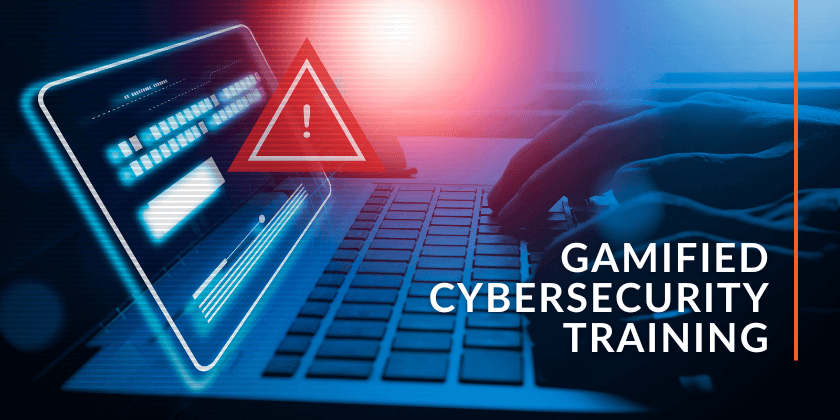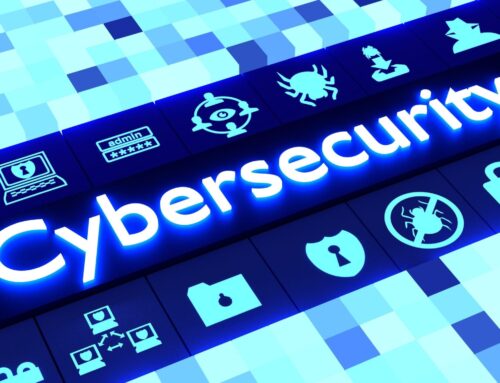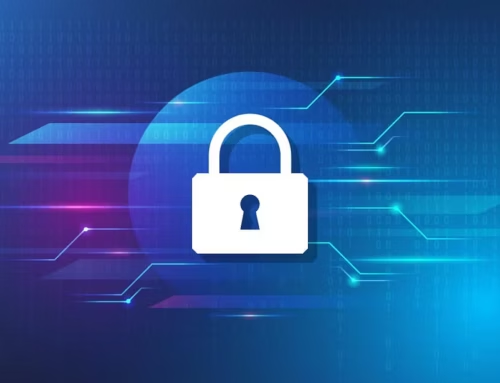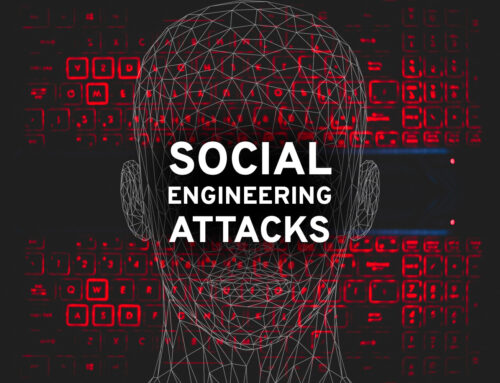
Gamification in Cybersecurity Awareness Training.
Gamified Cybersecurity Awareness Training: The Power of Gamification in Cyber Security Awareness.
In today’s digital age, where cyber threats are constantly evolving, ensuring a robust security posture is paramount for every organization. Cybersecurity awareness training plays a pivotal role in achieving this, but traditional methods often fall short in engaging employees and fostering lasting behavioral change. Gamification presents a compelling alternative, leveraging game mechanics to transform mundane security training into an interactive and rewarding experience, ultimately enhancing cybersecurity awareness across the board.
Understanding Cybersecurity Awareness
What is Cybersecurity Awareness?
Cybersecurity awareness encompasses the knowledge and understanding that employees possess regarding cyber threats and security practices. It’s about helping employees recognize phishing attempts, understand password security, and adhere to security policies. A high level of cybersecurity awareness empowers individuals to make informed decisions and act as a first line of defense against cyber attacks, strengthening the overall security culture within the organization and preventing real-world cyber incidents.
The Importance of Cybersecurity Awareness Training
Cybersecurity awareness training is essential because human error remains a significant vulnerability in an organization’s security infrastructure. Effective security training programs can significantly reduce the risk of successful phishing attacks and other social engineering exploits, thereby enhancing security awareness. By keeping training relevant and providing employees with the necessary knowledge and skills, businesses can foster a security culture where security practices become second nature, minimizing the potential for costly security breaches and reputational damage.
Key Components of an Effective Security Awareness Program
An effective security awareness program requires careful planning and execution. Key to success are the following elements of gamified cyber security training:
- Engaging and interactive content to capture employee attention and promote knowledge retention.
- Training content relevant to employee roles and responsibilities, addressing specific cyber threats, is essential for effective gamified cyber security training.
- Continuous updates to gamified security awareness training reflect the evolving benefits of gamification. threat landscape.
- Regular assessments and feedback mechanisms to measure effectiveness and identify areas for improvement.
Gamification in Cybersecurity Training
Defining Gamification and Its Role in Education
Gamification in cybersecurity involves integrating game mechanics into security awareness training to make the learning process more engaging and effective. By applying game-design elements and game principles in non-game contexts, gamified cybersecurity training transforms traditional training modules into interactive experiences. This helps employees absorb complex cybersecurity information more readily, fostering a security culture that embraces continuous learning.
How Gamified Cybersecurity Training Works
Gamified cybersecurity training aims to make security awareness programs more captivating. This is often achieved by incorporating elements such as:
- Points can be awarded for identifying phishing attempts or completing training material.
- Badges
- Leaderboards
- Interactive scenarios in training can simulate real-world cyber behavior and threats.
These game mechanics motivate employees to actively participate, complete training modules, and apply their knowledge to real-world situations, ultimately transforming cybersecurity training. By providing immediate feedback and rewards, gamified learning enhances knowledge retention and reinforces desired security practices, ensuring our client’s data and infrastructure are secure.
Benefits of Gamified Security Training
The benefits of gamified security training are numerous. It enhances engagement and ultimately leads to improvements in several key areas:
- Boosting knowledge retention.
- Promoting behavioral change, leading to improved cybersecurity awareness across the organization.
Gamified training also makes security practices more enjoyable and less daunting, fostering a proactive security culture where employees are more vigilant and more likely to report potential security threats. This makes security practices more ingrained and reduces the risk of cyber attacks, offering our clients peace of mind.
Implementing Gamification in Security Awareness Programs
Steps to Create a Gamified Cybersecurity Training Program
Creating a gamified cybersecurity training program involves several key steps. First, define clear learning objectives and identify the specific security behaviors you want to promote. Next, design engaging game mechanics that align with these objectives, such as incorporating points, badges, or challenges. Then, develop interactive scenarios that simulate real-world cyber threats, allowing employees to apply their knowledge in a safe environment. Be sure to select a training platform that can support gamified content and track employee progress in cyber security training. By taking these steps, we assure your cybersecurity measures are up to par with the latest gamified security awareness training techniques.
Best Practices for Engagement and Retention
To maximize engagement and retention in a gamified cybersecurity training program, it is essential to implement several best practices. Keep training modules short and focused, and provide regular feedback and rewards to reinforce positive behaviors. Use storytelling and narrative to make the training content more relatable and memorable. Incorporate elements of competition and collaboration to foster a sense of community and motivate employees to excel in their cyber behavior. Ensure the training content remains fresh and relevant to address evolving cyber threats, empowering its clients through a comprehensive suite of IT security solutions.
Measuring the Success of Gamified Training
Measuring the success of gamified training is crucial to ensure that the program is achieving its intended objectives. Track key metrics such as employee participation rates, knowledge retention scores, and behavioral changes in security practices. Conduct regular assessments and surveys to gather feedback and identify areas for improvement in performance in security training. Monitor the organization’s overall security posture and track the number of successful phishing attempts and other cybersecurity incidents. Gamification in cybersecurity helps employees fortify your business against potential threats while making training interactive and enjoyable.
Real-World Examples of Gamification in Cybersecurity
Case Studies of Successful Gamified Awareness Programs
Numerous organizations have successfully implemented gamification in cybersecurity, yielding significant improvements in their security posture. For instance, several financial institutions have adopted gamified training methods to enhance security awareness. phishing simulations, where employees earn points for correctly identifying and reporting simulated phishing emails using gamification. These real-world applications demonstrate the power of gamified cybersecurity training to enhance employee vigilance and reduce the risk of successful phishing attacks, making security practices more engaging and effective.
Innovative Gamified Training Platforms
The market offers a range of innovative gamified training platforms designed to make security awareness training more interactive and engaging. These platforms often feature interactive scenarios, challenges, and leaderboards to motivate employees and reinforce security best practices. Some platforms even use virtual reality to simulate real-world cybersecurity incidents, providing a more immersive and realistic training experience. Such advancements ensure that training modules transform cybersecurity training and are in step with evolving cybersecurity threats.
Lessons Learned from Gamified Cybersecurity Initiatives
While gamification in cybersecurity offers tremendous potential, it’s essential to consider the lessons learned from past initiatives. One key takeaway is the importance of aligning game mechanics with specific learning objectives in traditional security awareness programs. Another is the need to keep training content fresh and relevant to address evolving cybersecurity threats. Organizations should also carefully measure the success of their gamified training programs, using data to refine their approach and maximize its impact on employee behavior and organizational security. We assure your security awareness program is successful, making security a part of your everyday practice.
The Future of Gamification in Cybersecurity
Trends Shaping the Future of Cybersecurity Awareness Training
Several trends are shaping the future of cybersecurity awareness training, including the increasing use of artificial intelligence and machine learning to personalize training content and adapt to individual learning styles. Microlearning, which delivers bite-sized training modules, is also gaining traction as a way to combat training fatigue and improve knowledge retention. These advancements are aimed at making security awareness training more effective, engaging, and relevant to employees’ daily work, further empowering its clients through a comprehensive suite of IT security solutions.
The Evolving Landscape of Cyber Threats and Training Needs
As cyber threats continue to evolve in sophistication and frequency, cybersecurity training needs to adapt accordingly. Training programs must address emerging threats such as ransomware, supply chain attacks, and IoT vulnerabilities. They should also focus on developing employees’ critical thinking skills, enabling them to identify and respond to novel cyber threats. By staying ahead of the curve, organizations can ensure their employees are well-prepared to defend against the latest cybersecurity risks, offering our clients peace of mind. Gamification in cybersecurity is the future of effective cyber security awareness training, offering numerous benefits of gamification.
Innovations on the Horizon: What to Expect
The future of gamification in cybersecurity holds exciting possibilities for improving information security. We can expect to see more sophisticated game mechanics, personalized learning paths, and immersive training experiences. Technologies like augmented reality and virtual reality will likely play an increasingly important role in simulating real-world cybersecurity incidents. Gamified cybersecurity will enhance engagement, boost knowledge retention, and promote behavioral change, leading to improved cybersecurity awareness across the organization through the power of gamification. We assure your infrastructure is secure, safe.
5 Surprising Facts About Gamification in Cybersecurity Awareness Training
- Gamification can increase engagement rates by up to 60%, making users more likely to participate in cybersecurity training.
- Studies show that gamified training can improve knowledge retention by 20% compared to traditional training methods.
- Incorporating game elements like points, badges, and leaderboards can foster healthy competition among employees, enhancing overall performance.
- Gamification can simulate real-world cyber threats, providing employees with practical experience in a safe environment.
- Organizations using gamified training report a decrease in security incidents by up to 50% within a year of implementation.
What is gamification in cybersecurity awareness training?
Gamification in cybersecurity awareness training refers to the incorporation of game-like elements into training programs aimed at enhancing participants’ understanding of cyber threats and security practices. This approach makes learning interactive and enjoyable, helping to reinforce security practices and improve retention of cybersecurity knowledge.
How does gamification work in cybersecurity awareness programs?
Gamification works by integrating elements such as points, badges, leaderboards, and challenges into security awareness programs. These gamified elements create a competitive and engaging environment that encourages participants to actively engage with the content, making the training more enjoyable and effective in achieving security goals.
What are the benefits of using gamified training in cybersecurity?
Using gamified training in cybersecurity has several benefits, including increased engagement, improved knowledge retention, and enhanced motivation among participants. Gamified training helps create a strong security culture by making learning fun, thus encouraging employees to take cybersecurity seriously and apply their knowledge in real-world scenarios.
What are some examples of gamification in cybersecurity training?
Examples of gamification in cybersecurity training include interactive quizzes, simulation games that mimic real-world cyber attacks, and role-playing scenarios where participants must identify and respond to security threats. These examples demonstrate how gamification can transform traditional training into an engaging and effective learning experience.
How can gamification improve traditional security awareness training?
Gamification can improve traditional security awareness training by transforming generic training videos into interactive experiences that capture participants’ attention. By incorporating game mechanics, training becomes more enjoyable and motivates learners to complete their training, ultimately leading to better understanding and retention of cyber security knowledge.
What is the role of gamified cybersecurity training in developing cyber skills?
Gamified cybersecurity training plays a crucial role in developing cyber skills by providing hands-on experiences that are both challenging and rewarding. This approach allows participants to practice their skills in a safe environment, ensuring that they are better prepared to handle real-world cyber threats and reinforcing their ability to implement actionable security practices.
How does gamification contribute to creating a strong security culture?
Gamification contributes to creating a strong security culture by fostering engagement and collaboration among employees. When training is enjoyable and interactive, it encourages participants to share their experiences and learn from one another, ultimately leading to a more informed workforce that prioritizes cybersecurity as a shared responsibility.
Can gamified training be effective for all types of employees?
Yes, gamified training can be effective for all types of employees, including those with varying levels of technical expertise. The interactive nature of gamified cybersecurity training ensures that all participants, regardless of their background, can engage with the material and develop the necessary skills to protect against cyber threats.





